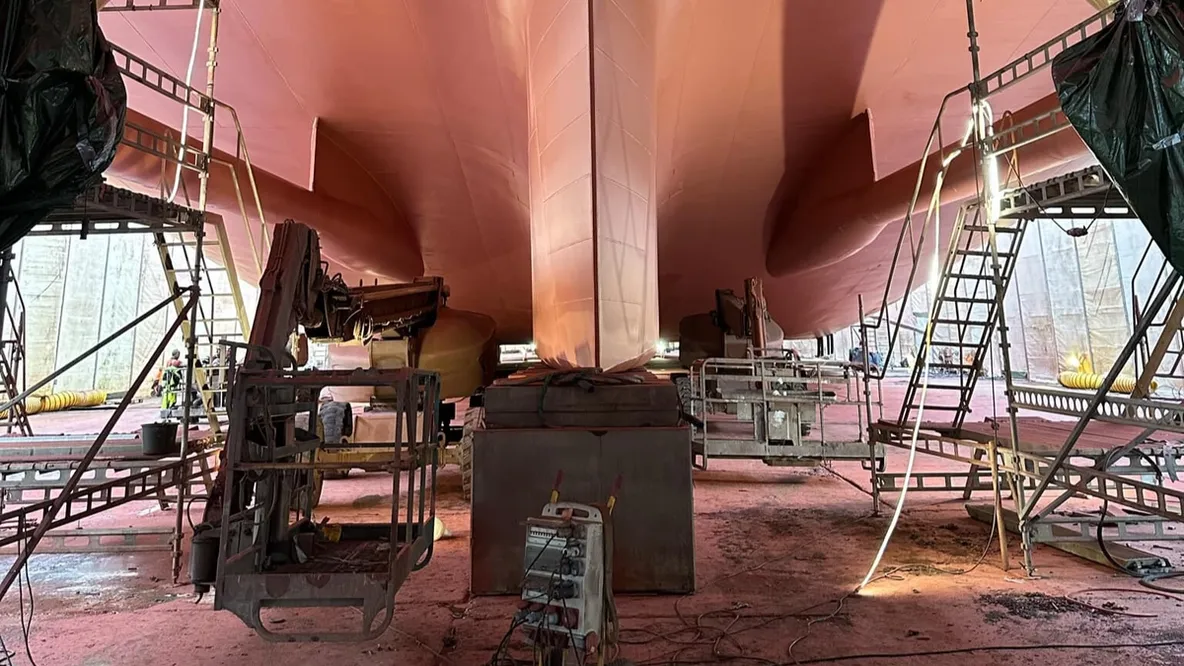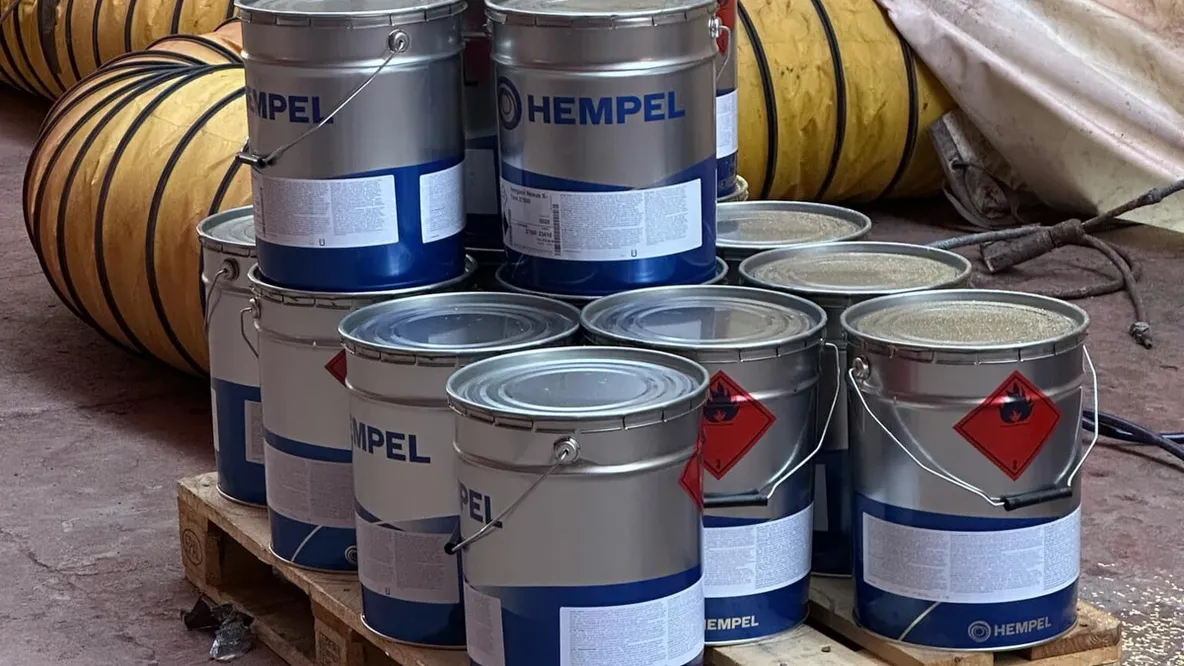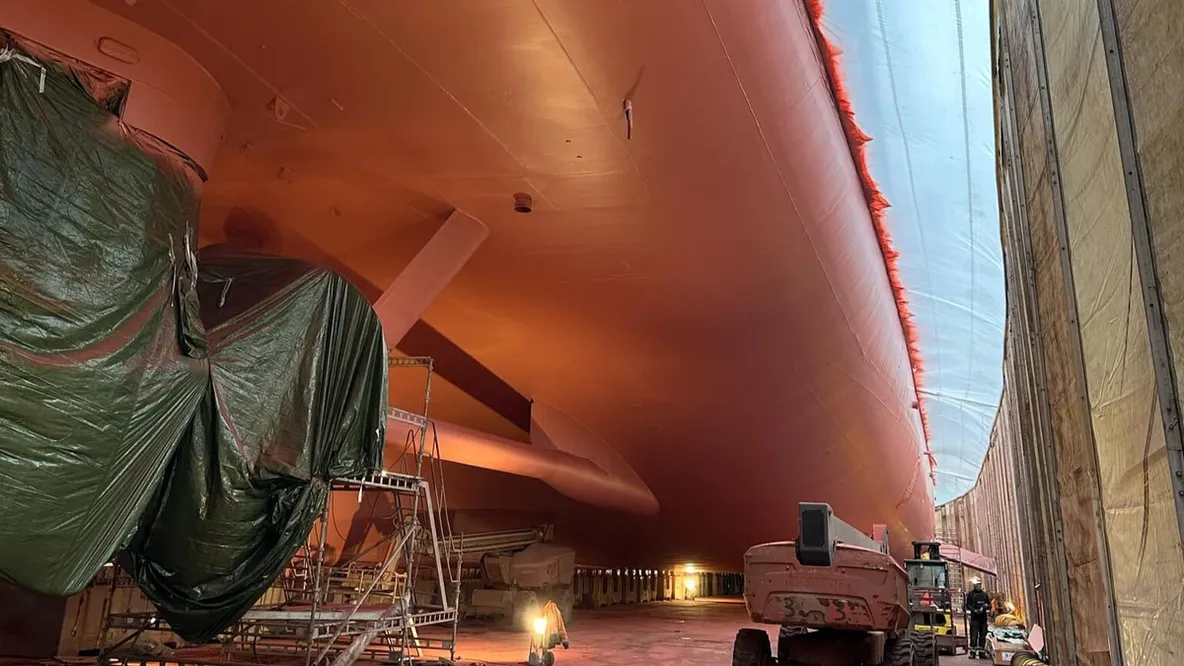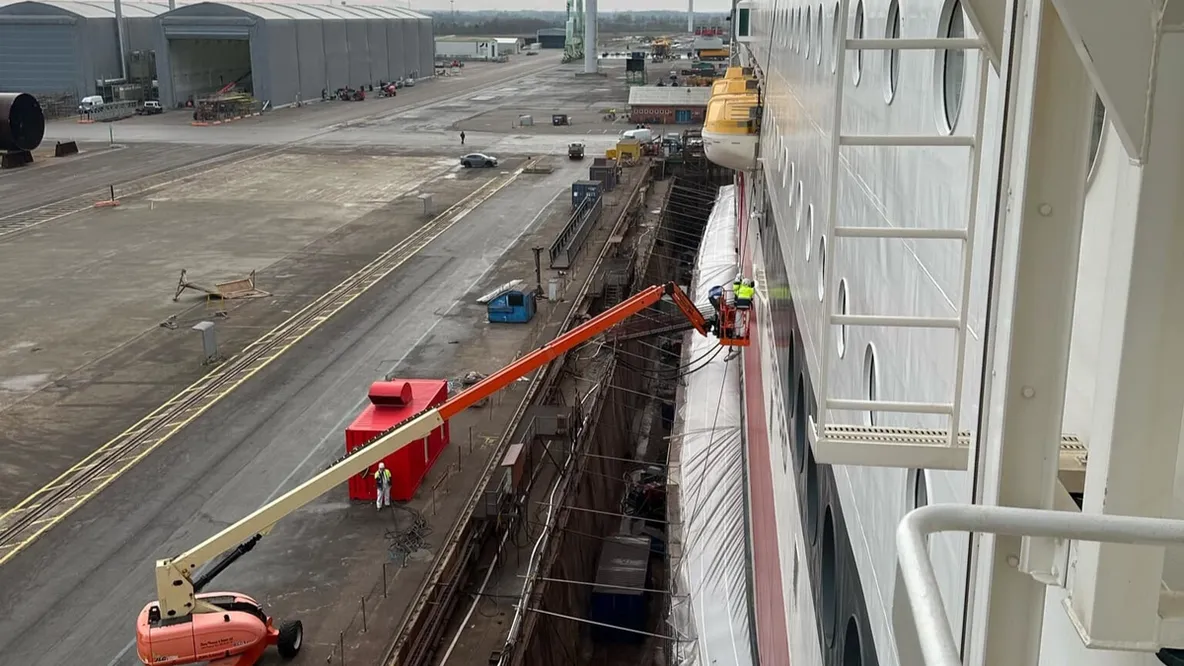Smooth and green sailing with silicone paint
By using silicone paint, Fjord Line’s ferries glide more easily through the water, resulting in significant climate and environmental benefits on the routes between Norway and Denmark.
– The silicone paint reduces resistance as the ship moves through the water, which leads to significantly lower fuel consumption. This helps us cut CO2 emissions while also reducing costs, says Ole Svendsen, COO of Fjord Line.
– As a ferry operator, it is important for us to find products and solutions that help us become more environmentally friendly. Our goal is to be a greener transport alternative between Norway and Denmark, explains Svendsen.

Proven major environmental benefits
While MS Stavangerfjord has been using silicone paint for several years, MS Bergensfjord received its first coating and sailed with the new paint for the first time in January 2025. The paint technology is called Hempaguard and is produced by the paint manufacturer Hempel, which has conducted extensive calculations and measurements of its effects.
– For a ship like Bergensfjord, this means a reduction in CO2 emissions of as much as 21,000 tonnes over a six-year period, says Pål Morten Wickmann, KAM Marine at Hempel.
– The immediate effect when we apply Hempaguard is a 6% saving. If all old paint layers are completely removed beforehand, this increases to a total saving of over 8%. Since the paint remains effective throughout the six-year period, with only a 1% increase in power requirement over that time, we achieve an additional saving of almost 7%. This results in a total fuel saving of 15%, explains Wickmann.

Additional environmental benefit with reduced fouling
The smooth surface created by silicone paint offers several significant environmental advantages. One major issue in shipping is ‘fouling,’ where marine microorganisms, plants, and animals attach to the hull. This can lead to the spread of invasive and environmentally harmful species, such as sea squirts, which threaten biodiversity in Norwegian harbours. These organisms form a dense layer on the seabed, displacing native species.
– The silicone paint forms a surface that makes it difficult for marine organisms to attach. This prevents fouling, and the few organisms that do manage to stick easily fall off when the ship is in motion. This is a clear distinction from traditional solutions, which contain toxins to kill organisms – a method that is also harmful to marine ecosystems, says Wickmann.
– Traditional ship paint contains biocides, including copper, which actively kill marine organisms. Over time, around 90% of these toxic substances dissolve into the sea. Our silicone-based paint technology, however, uses only 5% of the amount of biocides found in traditional paint, and almost all of it remains on the hull, he explains further.
Fouling also increases friction in the water, requiring the ship to use more energy to maintain the same speed. This leads to higher fuel consumption and increased CO2 emissions. With silicone paint, both of these challenges are eliminated.
Simpler and greener maintenance
For a ship like Bergensfjord, as much as 40% of the outer hull is submerged – an area of 5,000 square metres that requires regular maintenance. Traditional antifouling paint requires extensive sandblasting during docking, an energy-intensive and costly process.
– With this silicone paint, maintenance is much simpler. When docking every two to three years, the surface only needs to be cleaned rather than sandblasted and repainted. This saves both resources and energy that would otherwise be spent on maintenance, says Wickmann.

A growing green trend
Hempel has set ambitious environmental goals and has reduced its own production-related CO2 emissions by 51% since 2019. As a supplier to the shipping industry, the company is experiencing increased demand for environmentally friendly alternatives.
– We have supplied this system to over 5,000 ships worldwide. We now see entire fleets switching to these types of products, says a representative from Hempel.
This development is also crucial for Fjord Line
– For us, it’s about making conscious choices regarding new products and solutions that help us achieve our goal of being a greener transport alternative. Silicone paint is a great example of this, delivering positive results for the climate, environment, and economy, concludes Ole Svendsen of Fjord Line.

About Hempel
- Majority owner: Hempel Foundation
- Founded in Copenhagen in 1915
- 26 paint factories worldwide
- 17 research and development laboratories
- Over 2,700 employees in total
- 400 paint inspectors oversee projects globally
- The marine segment (ship paint) is the company’s largest product sector
Major environmental benefits
- Up to 15% total fuel savings
- 21,000 tonnes of CO2 reduction per ship over six years
- Only 5% of the biocide amount used in traditional paints
- Less than 1% of the paint leaks into the sea, compared to 90% for traditional paints
- 120 days of idle time in port without fouling, compared to 12 days for traditional paints